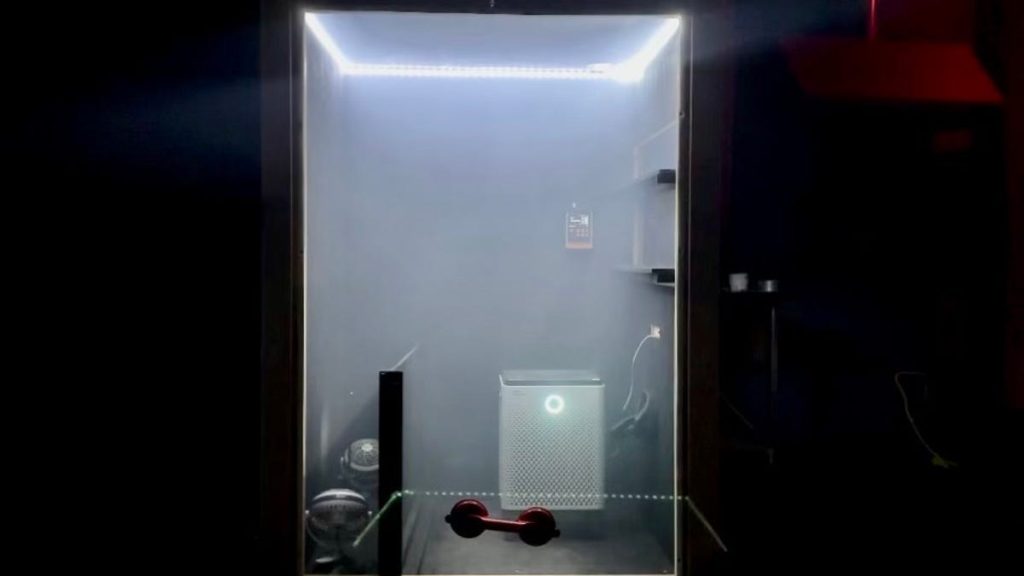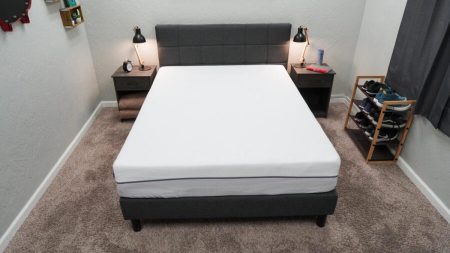An air purifier was tested in a dusty environment to see if it could help reduce dust inside the home. The test chamber was filled with dust particles from drywall sand and sugar, and a particle counter measured the air quality. When the air purifier was turned on, the concentration of dust particles in the air started to decrease almost immediately. In just three minutes, the air purifier was able to reduce the total particles per cubic meter from 900 million to under 10 million, making the air breathable again. This was achieved by the air purifier pulling air from the surroundings, filtering out impurities like dust particles, and circulating cleaner air back into the room. Overall, the test showed that air purifiers can effectively remove dust from the home.
Speaker 2: It’s important to note that not all air purifiers are created equal when it comes to dust removal. High-efficiency particulate air (HEPA) filters are known for their ability to capture particles as small as 0.3 microns with 99.97% efficiency. This makes them highly effective at removing dust, pollen, pet dander, and other allergens from the air. However, other types of filters, such as electrostatic and activated carbon filters, may not be as effective at capturing dust particles. When choosing an air purifier for dust removal, it’s essential to look for one that uses a HEPA filter and has a strong airflow to ensure maximum efficiency.
Speaker 3: In addition to using an air purifier, there are other steps you can take to reduce dust in your home. Regularly dusting and vacuuming, using allergen-proof bedding covers, and keeping pets out of certain areas can help minimize dust accumulation. Maintaining optimal humidity levels, around 30-50%, can also prevent dust mites from thriving in your home. By combining these preventative measures with the use of an air purifier with a HEPA filter, you can create a cleaner and healthier indoor environment for you and your family.
Speaker 4: Some people may wonder if air purifiers can have any negative effects on their health. While air purifiers are designed to improve indoor air quality, some individuals may experience irritation from the increased air circulation or noise produced by the purifier. To prevent any potential health issues, it’s essential to choose an air purifier with adjustable fan speeds and noise levels. Additionally, regularly maintaining and replacing the filters in your air purifier can help prevent the buildup of mold, bacteria, and other harmful particles that could be released back into the air. By following proper maintenance guidelines and using the air purifier as directed, you can enjoy the benefits of cleaner air without any adverse health effects.
Speaker 5: It’s important to consider the size of the room or area where you plan to use the air purifier when selecting the right model for your home. Larger rooms may require a more powerful air purifier with a higher Clean Air Delivery Rate (CADR) to effectively remove dust and other particles. It’s also crucial to position the air purifier in a central location away from walls and furniture to allow for optimal airflow and circulation. By choosing the right size and placement for your air purifier, you can maximize its efficiency and effectiveness in reducing dust levels in your home.
Conclusion: In conclusion, air purifiers can indeed help reduce dust inside the home by filtering out particles and circulating cleaner air back into the room. HEPA filters are recommended for their high efficiency in capturing dust particles, while additional steps such as regular cleaning and maintaining optimal humidity levels can further reduce dust accumulation. While some individuals may experience minor irritations from increased air circulation or noise produced by the purifier, proper maintenance and filter replacement can help mitigate any potential health risks. By selecting the right size and model of air purifier for your home and following recommended usage guidelines, you can create a cleaner and healthier indoor environment for you and your family.















